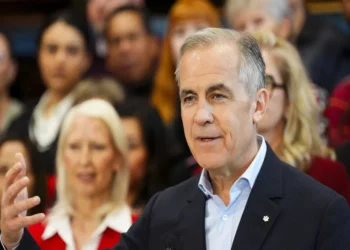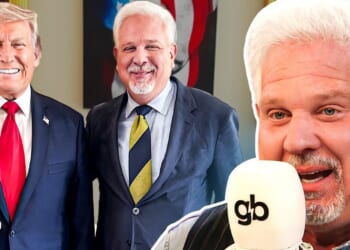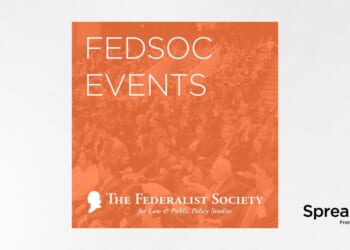The mainstream expectation is that the new tariffs imposed by President Donald Trump will jack up prices and cause inflation to rise, but if the tariffs result in a recession and people lose confidence in the economy, inflation could fall.
That scenario is different from the one most commonly feared in the months ahead. Generally, it is thought that tariffs would raise prices because they are akin to a tax on consumers. When a tariff is assessed at the border, companies often pass it on to consumers in the form of higher prices. As Trump has moved to place tariffs on countries across the world, there is a widespread expectation that, in the short term, prices will rise across the board.
But there’s another possibility. When the economy is bad and consumers stop spending money and demand falls, prices tend to drop. So if Trump’s tariff agenda begins to cause the economy to deteriorate or even enter a recession, inflation would end up coming down, some economists argue.
Ryan Bourne, an economist at the Cato Institute, told the Washington Examiner that there is so much uncertainty surrounding these tariffs that it is having a secondary effect on not only investment but also on consumption. He thinks consumers might also pull back on spending as the tariffs start to filter through the economym given the negative news surrounding them.
“Is it totally certain? No. But I think there’s quite a significant possibility that overall inflationary pressure might dissipate a bit rather than us seeing a sharp spike in the price level,” Bourne added.
A flat 10% tariff rate for U.S. trading partners was announced in early April, and much higher tariff rates were implemented for certain other countries. After an overwhelmingly negative response from the markets, Trump backtracked and removed the higher tariff rates for 90 days.
Separately, China has been the top target for Trump’s tariffs, sparking fears of an all-out trade war. Rates on Beijing were ratcheted up to a blistering 145%. Trump has also imposed tariffs on Canada and Mexico over fentanyl and border security, and he has also imposed tariffs on steel and aluminum, as well as other products.
The Federal Reserve and private-sector forecasters have predicted that headline inflation might tick up as a result of those tariffs. But that calculus could change if there is a sharp economic downturn, a risk that has come into view as the tariffs have hit consumer and investor confidence.
“It looks like unless there’s a very early change in this tariff policy, we could be heading into recession,” Desmond Lachman, a senior fellow at the American Enterprise Institute, told the Washington Examiner.
JPMorgan analysts put the chance of a global recession at 60% over the coming year if the tariffs are sustained. That is up from 40% before Trump announced the tariffs. Goldman Sachs also recently increased its projected odds of a recession from 20% to 45%.
A monthly survey of more than 300 CEOs from industry group Chief Executive found that 63% of them forecasted a recession or other economic downturn in the next six months. That’s an increase from 48% in March who said the same.
While the tariffs will push prices higher and could juice inflation in the intermediate term, the central bank will also know that the economy is cooling. Lachman said it would be difficult for the Fed to cut interest rates if inflation is still above target.
“So, the idea of inflation coming down once the recession occurs, that’s likely,” Lachman said. “That would happen — particularly if you had a deep recession, inflation wouldn’t be your problem, inflation would come down.”
But in the short term, if deals aren’t reached with other countries, particularly with Beijing to bring down the 145% tariffs, Lachman warned that consumers may soon see empty shelves and higher prices at the store.
Inflation, as gauged by the most closely watched consumer price index, has trended down early in Trump’s tenure. The Fed is angling for 2% inflation.
The consumer price index fell to 2.4% in March. Core inflation, or inflation stripping out volatile food and energy prices, fell to its lowest rate since 2021.
Consumer expectations of inflation have also skyrocketed, showing that most people think that prices, at least over the next year, will end up jumping.
The University of Michigan Consumer Sentiment Index for April, released on Friday, found that year-ahead inflation expectations jumped from 5% last month to a concerning 6.5% this month. That is the highest reading since 1981, when the Great Inflation was finally winding down.
It is worth noting that at any moment Trump could end up reversing course on his tariff agenda, providing some relief for the markets and economy, or could just as easily ratchet tariffs back up or announce some other surprise changes.
Another scenario is that of stagflation, according to Stephen Kates, a financial analyst at Bankrate.
Stagflation, a portmanteau of “stagnation” and “inflation,” is when prices are rising while economic growth and the labor market are languishing.
The term was coin in the 1970s, when the economy suffered both high inflation and rising and high unemployment. Before then, many leading economists thought that combination was impossible. Instead, they believed that higher inflation could be traded off for lower unemployment.
THE ECONOMIC INDICATORS THAT ARE HOLDING UP DESPITE TARIFFS GLOOM
The proximate reason for the stagflation in the 1970s was the big price increases in oil around that time period. Kates said that this is different than the oil shock the U.S. experienced then in that the tariffs are “something that we have sort of done to ourselves.”
“Probably the biggest boogeyman out there for the economy is stagflation, which would be the definition of falling demand but still rising prices,” Kates told the Washington Examiner.















